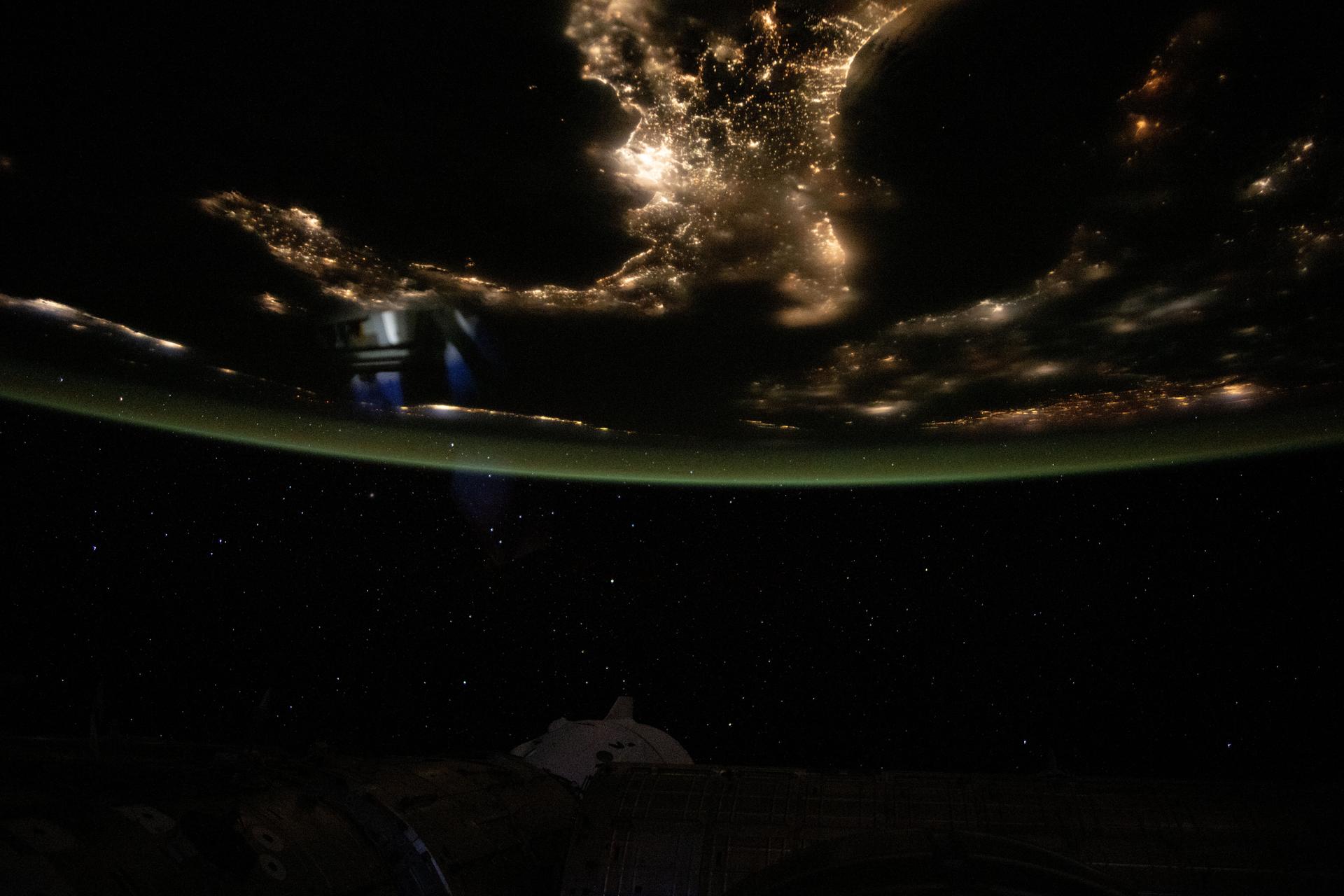
10 Apr 2025
Preventing space-caused head and eye pressure and observing how blood flows in weightlessness were the top research objectives aboard the International Space Station on Thursday. The Expedition 72 crew is also preparing to split up while getting ready for the next U.S. cargo mission this month.
Doctors are testing a specialized thigh cuff for its ability to reduce blood flow toward an astronaut’s upper body caused by microgravity. Nichole Ayers of NASA assisted Takuya Onishi of JAXA (Japan Aerospace Exploration Agency) while he wore a pair of the thigh cuffs on his left and right legs. Ayers then scanned Onishi’s legs with the Ultrasound 2 device and collected blood pressure measurements to determine the effectiveness of the thigh cuffs. She also checked his eyes using medical imaging hardware to detect potential eye structure changes, a possible symptom of living in space. Knowledge gained from the biomedical study could protect crews on long duration missions to the Moon, Mars, and beyond.
Roscosmos Flight Engineers Sergey Ryzhikov and Alexey Zubritsky participated in another circulatory system study that observes how blood flows from the head to the limbs and back again in weightlessness. The two cosmonauts, who just arrived at the orbital outpost on Tuesday, took turns wearing sensors on their forehead, fingers, and toes revealing how blood circulation adapts to microgravity. Doctors will use the data to monitor crew health and provide countermeasures to the effects of living and working in weightlessness. Ryzhikov and Zubritsky also continued unpacking cargo stowed aboard the Soyuz MS-27 spacecraft that launched the duo, along with NASA Flight Engineer Jonny Kim, to the station.
NASA Flight Engineer Don Pettit joined station Commander Alexey Ovchinin and Flight Engineer Ivan Vagner, both from Roscosmos, and checked their Sokol launch and entry suits for leaks. The trio wore the suits when they launched together aboard the Soyuz MS-26 crew ship and docked to the Rassvet module on Sept. 11, 2024. They will wear the suits again when they return to Earth on April 19 inside the Soyuz MS-26 completing a seven-month space research mission.
The next cargo mission from SpaceX is due to launch later this month replenishing Expedition 72 with new science experiments and crew supplies. Pettit and Kim worked together preparing for the Dragon spacecraft’s arrival gathering items for stowage aboard Dragon when it returns to Earth about four weeks later. Pettit also assisted Kim, who is in his third day aboard the orbital lab, as he worked out on the advanced resistive exercise device for the first time.
NASA Flight Engineer Anne McClain spent her day in the Quest airlock cleaning life support components and swapping hardware on a pair of spacesuits. Working in the orbiting lab’s Roscosmos segment, Roscosmos Flight Engineer Kirill Peskov serviced plumbing gear and an oxygen generator throughout his shift on Thursday.
[Image]
The boot of Italy well-defined by the nation’s city lights stands in contrast to the Tyrrhenian Sea (left) and the Adriatic Sea (right) with the Balkans at far right underneath an atmospheric glow blanketing Earth’s horizon.
